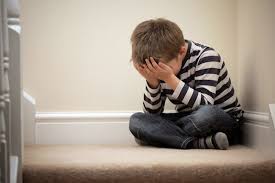
Discontinuing the Child Protection Plan
Guidance on discontinuing the Child Protection Plan when the child is no longer required to be the subject of the plan.
1. Removing the Child Protection Plan
1.1 A Child Protection Plan should be removed when:
- It is judged that the child is no longer continuing to, or is no longer likely to, suffer significant harm;
- The child and family have moved permanently to another Local Authority area and a transfer Conference has taken place in the new Local Authority (the transfer Conference should take place within 15 working days of the new Local Authority being notified of the family’s permanent move);
- The child has reached 18 years of age (a Review Conference should take place around the child’s 18th birthday and this should be planned in advance);
- The child has died or has permanently left the UK.
1.2 If either of the last two criteria are met, the Service Manager for Conferences has the authority to remove the Child Protection Plan without holding a Review Conference. In these two situations the Review Unit Manager must record their decision and details of their consultation with other agencies in the relevant section of the child’s electronic case file.
1.3 A Child Protection Plan should not be removed at the first Review Conference except in exceptional circumstances where it can be demonstrated that the child is no longer at a level of risk that would meet the threshold for a Child Protection Plan.
1.4 Discontinuing a Child Protection Plan should not lead to the automatic withdrawal of services. Prior to the Review Conference, the Core Group, must consider whether support services are still required and discuss with the child and family what might be needed based on a re-assessment of the child's needs.
1.5 When a Child Protection Plan is removed, the Review Child Protection Conference must recommend what level of support is going to be provided going forward and this may include:
- A Child in Need Plan
- An Early Help Plan - if there is still additional needs that require a targeted response and if this is case, a new Lead Professional should be identified at the Review Conference
- Universal Services
2. Exceptional circumstances are defined as:
- The perpetrator of the abuse is the subject of a significant custodial sentence that removes the risk of further significant harm. If a custodial sentence is imposed then consideration should be given to discontinuing the Child Protection Plan* in conjunction with the police the National Probation Service or the Community Rehabilitation Company who can advise on release dates. It is important to remember that most perpetrators only serve half of the custodial sentence passed down to them. Therefore a “significant custodial sentence” is classed as no less than two years (meaning that at least 12 months will be served), but a specific conversation about risk should be had on a case by case basis. It is possible to apply to the Parole Board or the Governor of the releasing prison for additional licence conditions which could reduce further risks.
- An assessment has evidenced that the children are now safe. (eg, where they are placed with an alternative carer)
3. Avoiding ‘Double protection’
3.1 There are situations where children who are subject to a Child Protection Plan become either:
3.2 Section 20 Children Act 1989 accommodated (voluntarily accommodated) or are the subject of Care Proceedings, they are therefore ‘doubly protected’ in that they are subject to both a care plan through the Court process or/and the Looked After Children’s process and subject to a Child Protection Plan. This duplication is unnecessary and leads to an excess of reviewing procedures. It does not include Public Law Outline proceedings.
3.3 In the above circumstances, removal from a plan can be considered. The Social Worker must contact Core Group members to advise of the change of the child’s circumstances and on behalf of the Core Group the Social Worker will request the plan be removed by writing to the Independent Reviewing Officer.
3.4 Where the Protection Plan has been removed in these situations there must be ongoing multi-professional meetings at a minimum of 6 weekly until the long term plan to keep the child safe is either agreed by the LAC Review or the Court.
4. When a Child Protection Plan has been removed
4.1 When a Child Protection Plan is removed, the Review Unit should within 1 working day, send a notification, at a minimum, by way of secure e-mail or letter to all those agency representatives who were invited to attend the Initial Child Protection Conference and any subsequent Review Protection Conferences.
4.2 This initial notification should be followed by a copy of the minutes from the Conference that removed the Child Protection Plan. The minutes must reflect whether the Conference recommendation was to progress a Child In Need Plan, Early Help Plan or for Universal Services. If a plan was recommended, a copy of the plan agreed at the Conference should be included in the minutes.
5. Further Information